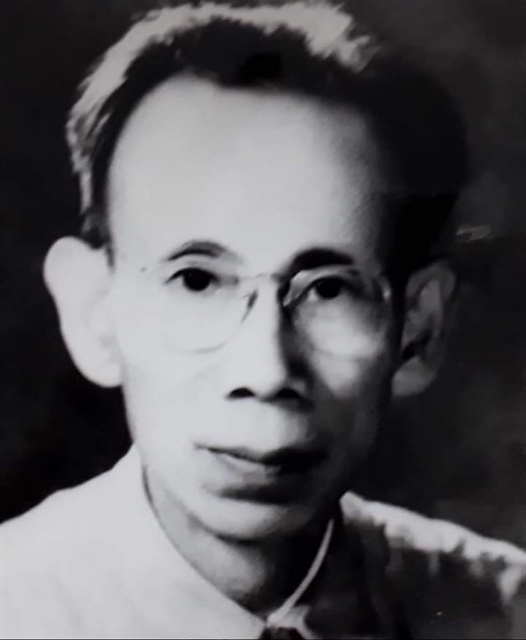
HÀ NỘI — An international auction house has officially corrected the name of a late Vietnamese artist, following calls from art researchers and the wider community.
Asium, the first auction-style marketplace for Asian art, has confirmed its error in Lot 145, which was auctioned on 03.11.2020. They have now rectified the mistake, correcting the artist’s name from “Trần Bình Lộc” to “Trần Tấn Lộc”.
The official response from the auction house was prompted by a Vietnamese independent curator and art researcher in Singapore, Ace Lê, in a Facebook post called ‘The Misidentification of Trần Tấn Lộc’, which stirred up concern among Vietnamese art enthusiasts.
“This is a constructive and transparent response on Asium’s part, which we highly appreciate. On behalf of the Vietnamese art community, we thank Asium for their swift action,” Lê said.
In his post, the Vietnamese curator expressed his concern regarding the misidentification of the Vietnamese artist by several prestigious auction houses in the past decade.
Particularly, in an upcoming sale on March 14 by French auction house Aguttes, the catalogue-cover work of Jeune Élégante Se Coiffant (1932) is attributed to the master Trần Bình Lộc from École des Beaux-Arts de l’Indochine, which is estimated to go for between 80,000-120,000 Euros.
“However, a mere glance at the signature spells instant doubt: this is not a work by Trần Bình Lộc, but another artist named Trần Tấn Lộc. There is little public information on this artist.”

Other auction houses, including Mutual Art, Lynda Trouvé and Thierry de Maigret, have also used the name of Trần Bình Lộc in their 2010, 2017 and 2020 auctions.
“Just via visual inspection, we could see that all of these lots bear the clear signature of ‘Tr Tan Loc’ – which could not have been mistaken for Trần Bình Lộc,” he said.
The art specialist and his colleagues have also turned to a Hán-Nôm scholar and professional translator for consultation on the characters in the painting that are in Vietnamese Nôm (Sino-Vietnamese).
According to him, the Nôm words clearly read Trần Tấn Lộc họa (Painted by Trần Tấn Lộc), with a title Người Con Gái Trải/Chải Đầu (A maid combing hair), and the letters in the red mock-seal spelling Văn Thái Hà Nội, referring to the picture gallery named “Văn Thái Hà Nội” where he worked at in Hà Nội.
To make sure, they compared this work with another of the same theme and period, Deux Jeunes Femmes Peignant Leurs Longs Cheveux (1932) by Phùng Văn Cừ, included in the 18.12.2020 sale by Boisgirard Antonini.
“Here the auction house wrongly spelt the artist’s name as Phung Van Cun.
“The calligraphy style in both artworks is similar, prompting us to conclude that indeed both pictures were sold in the same Văn Thái gallery in Hà Nội, which took the liberty to draw the artist’s credit, artwork title and poetry comments onto the finished works in 1932. This is an important finding.
“To conclude, the entire series of works attributed to Trần Bình Lộc by various auction houses over the last decade indeed belong to Trần Tấn Lộc instead,” Lê said.
The art researcher, therefore, calls for auction houses to correct the current and past lots to rightfully credit the artist Trần Tấn Lộc and, in the long run, continue to seek advice from Vietnamese art historians and researchers, especially those who could lend their expertise on Vietnamese and the Nôm language.
“We hope that the auction houses will be open to constructive criticism. We could together strive to architect a healthy and credible Indochine marketplace,” he added.
By March 1, Aguttes had changed the name of the artist who painted Jeune Élégante Se Coiffant into Trần Tấn Lộc; however, the year of his birth and death is still mistaken for Trần Bình Lộc.

Biography
The issue of the Vietnamese artist’s misidentification was first raised by researcher Nhật Vương.
Upon insightful research to trace and reach out to the artist’s surviving family members, colleagues and friends, Vương finally arrived at a biography for Trần Tấn Lộc, whose paintings and drawings had long been sold by auction houses and listed his work under the name Trần Bình Lộc.
According to the Lộc’s biography, that was written by Vương and published on luxuo.vn, the late artist (1906 – 1968) was born in Lủ Village, Thanh Trì District, Hà Nội. During his lifetime, he was a famous decorative painter in the capital city.
After four years of formal training, he graduated with a degree in Decoration from École Nationale de l’Artisanat in Hà Nội. In 1930, at the age of 24, he and his younger brother won prizes at a poster competition organised by the Director of the Indochina Beer and Ice Company.
During his life of artistic activities, he opened Tấn Lộc Fine Art Advertising Company at number 29-31 Hàng Đậu Street, specialising in painting advertisements that resonated throughout Indochina. Trademarks ranging from wine, confectionery, silk fabrics to bundles of chopsticks, pots and pans, even bags of mangosteen sent from the South are all drawn by him, with an easily identifiable logo.
In the 1940s, the artist was invited by the French Overseas Bank to design Indochina banknotes, famously the 1 and 20 Piastre notes. He also participated in drawing the National Emblem of Việt Nam. — VnExpress News
- Reduce Hair Loss with PURA D’OR Gold Label Shampoo
- Castor Oil Has Made a “Huge” Difference With Hair and Brow Growth
- Excessive hair loss in men: Signs of illness that cannot be subjective
- Dịch Vụ SEO Website ở Los Angeles, CA: đưa trang web doanh nghiệp bạn lên top Google
- Nails Salon Sierra Madre
 VnExpress News The News Gateway of Vietnam
VnExpress News The News Gateway of Vietnam





